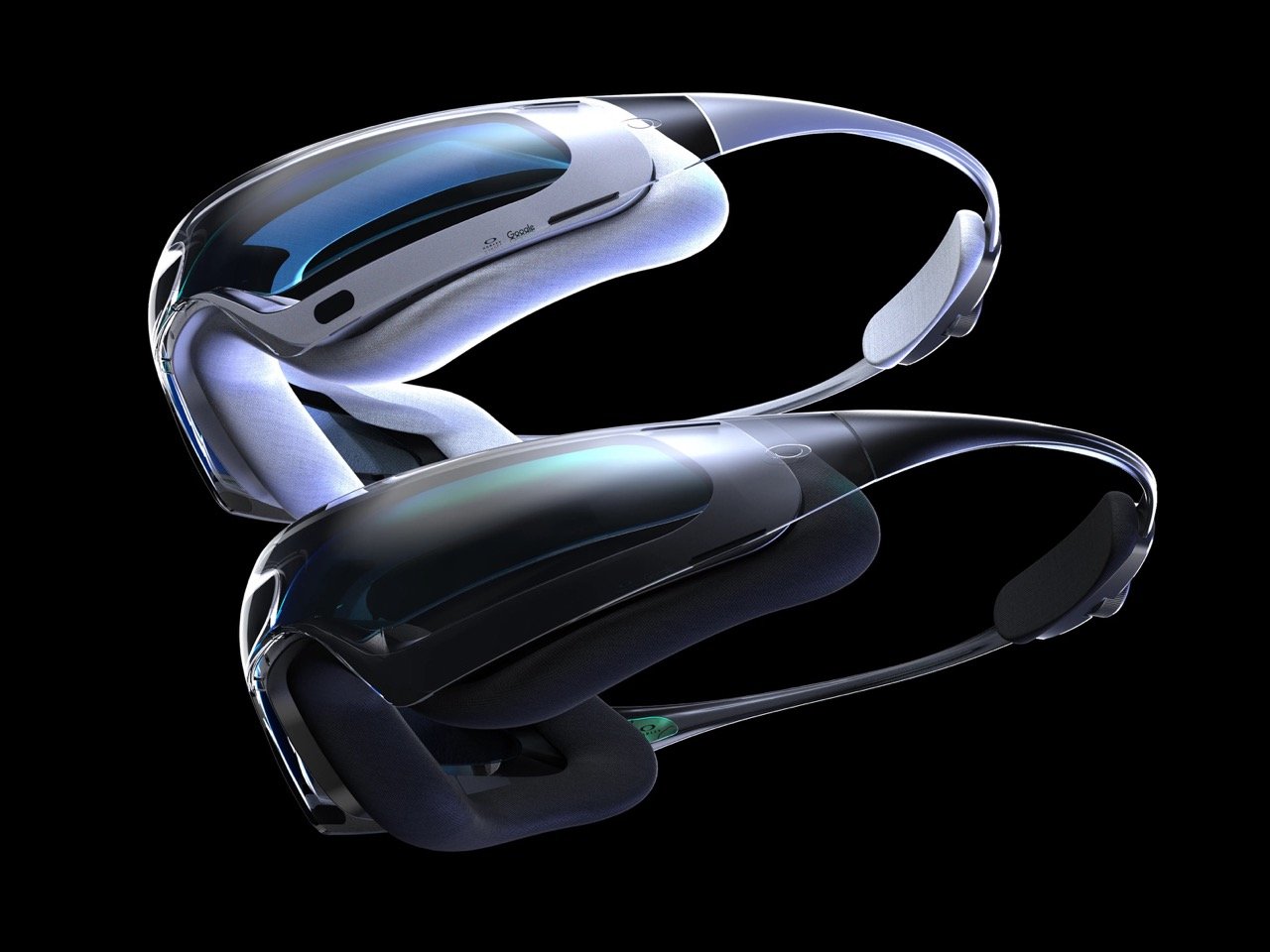Meta’s been on a roll, partnering with Ray-Ban and now with Oakley to debut the HSTN glasses, but remember when Google was sort of the de-facto leader in the smart headset space? Sure, Google Glass and Google Cardboard were VERY early for their times, but here’s something worth thinking about – what if Google just continued innovating in this sector instead of throwing us one-off concepts? Would Facebook even rebrand to Meta? Would Zuckerberg take that step, knowing Google’s monopoly would be tough to challenge? In an alternate universe where Google was the undisputed leader in AR/VR and AI, these Oakley Aether glasses would be arguably the hottest headset of its era.
Modeled after the ski goggle, the Oakley Aether are a performance-driven headset that encloses your eyes in a protective bubble with 100% visibility and an added dash of tech. Think goggles with a hint of Hololens (remember that?), powered by Android AR and designed to reimagine movement, insight, and precision. Conceptualized by RAYE_, the headset builds on a world where AI and AR exist seamlessly – you can pop on a pair of goggles and view the world differently, with a HUD that displays contextual information, notifications, and records your activity for scrutiny after the fact. Gemini AI makes everything worth it, allowing you to talk to your goggles sort of the way Tony Stark spoke to JARVIS. Now isn’t that a future we’d all love to live in?
Designer: RAYE_
Sure, playing BeatSaber or FitXR on your headset is a great way to work out in the metaverse, but that clearly isn’t the future we were hoping for. These supremely powerful headsets were designed to assist and train us, not just transport us to another land while we exercise. With the Oakley Aether, the wearable gives you the combined power of a fitness band, an artificially intelligent assistant, and an action cam, all packaged in the avatar of XR glasses. “Optics meets intelligence,” says RAYE_, who combined Google’s hardware chops with Oakley’s reputation as a sports-forward optical brand.
The goggles wrap around your head, forming a secure fit that’s perfect for everything from jogging to skiing to literal parkour. The secure fit isn’t just a sportswear decision, it actually helps distribute the components and weight so that you can wear the headset for longer. The adjustment knob at the back sits on a few essential components, powering all the sensors and hardware on the front. This weight distribution means less fatigue while working out.
Sometimes even the smallest imbalance can completely jeopardize an athlete’s performance, which is why it was important to ensure that the Aether was accurately weighted. Batteries were split equally between left and right halves, and all components were basically weight-aligned to give you a central gravity-point that doesn’t affect your performance. Cameras inside the headset monitor your eyes, giving you a HUD that responds to sight. A camera on the outside, however, records your surroundings, not just for object tracking and DOF, but also as basically an action camera of sorts.
Combine this with a LiDAR sensor and the Aether has true awareness of your surroundings, how high obstacles are, how fast you’re moving, etc. A gyroscope calculates tilt, a temperature sensor reads your body temperature, and other medical-grade sensors track your fitness while you exercise.
All the data gets fed to Google’s Gemini AI, which analyzes your performance in real-time, coaching you through your sports and your workout. The relationship you have with the AI is a two-way street, so you can talk to it too, asking it for performance stats, improvements, or even non-contextual information like which route you should take, what the temperature is, or whether there’s a Jamba Juice near you. A microprojector array inside the Aether casts a HUD directly on your glasses, giving you widgets that sit in the periphery of your vision. Projected light is cast on a waveguide embedded within the Aether’s inner visor, seamlessly overlaying digital elements over the real world (in a way that’s only visible to you).
The Aether, although conceptual, was envisioned as the ultimate AI+AR sports companion. Designed to handle everything from jogging to skiing, tennis, and even baseball, the Aether straddles the line between goggles and ‘tech headset’ rather well. They don’t look out of place when worn outdoors (although sure, there’s a slight X-Men Scott Summers appeal to them), and could easily be worn even with, say, a baseball helmet. The activity gets tracked holistically, and in real-time, giving you AI-powered insights that perhaps only a human can, as of where current technology stands.
Google abandoned the metaverse rather early. Sure, they contemplated it when Facebook rebranded to Meta and when Apple launched the Vision Pro, going all-in on AR/XR and partnering with Samsung over Project Moohan. However, what if Google hadn’t dropped the ball on the metaverse the way they did on social media, on computing, console/cloud gaming, and on a whole bunch of apps that are now a part of Google’s Graveyard (Picasa, you will be missed). The Google x Oakley Aether envisions that future, combining the best of what Google has to offer from a tech stack perspective, along with Oakley’s industry-leading optical design chops!
The post These Oakley + Google AR Glasses Pack Cameras, LiDAR, a Heads-Up Display, and Gemini AI first appeared on Yanko Design.

